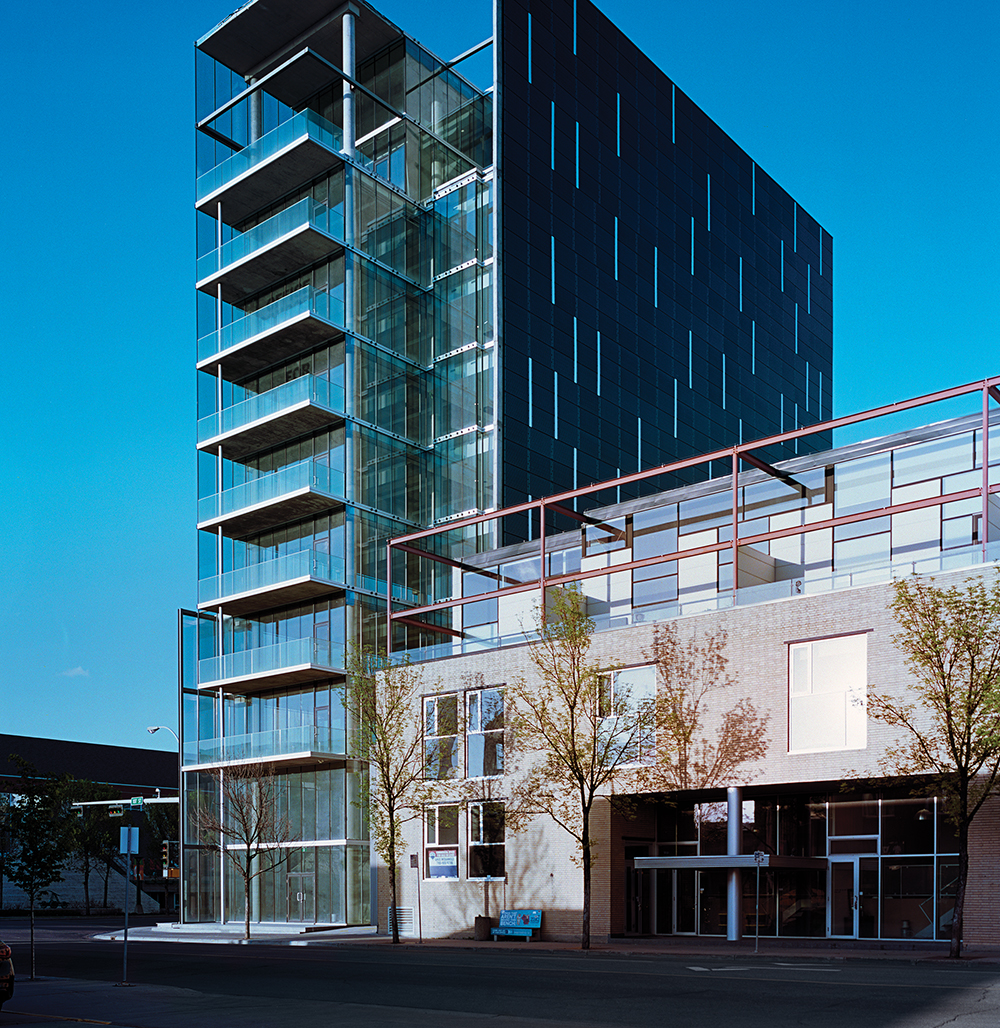It’s a 10-storey office building downtown with a wall of windows on the north side and an intriguing architectural design on the south. But the southern wall of The Edge wasn’t just designed with aesthetics in mind; architect Gene Dub was considering the environment. It’s made up of 450 vertical solar panels, converting the sun’s rays into energy through a design tailored specifically to our northern climate.
And it’s one of the largest vertical solar walls in a Canadian downtown area, capable of powering the equivalent of about 24 houses. Dub hoped the sun would completely power the office building – he made it to 80 per cent. But he used other design features, including the north-facing windows, with the goal of further decreasing energy needed from the grid.
“At a northern latitude, the sun is pretty acute. That’s why vertical solar panels make sense in a northern climate,” says Dub. In southern climates, he explains, the sun is always directly above, making horizontal panels more efficient. But here, snow often covers a building’s roof, and the lower light makes horizontal installations less efficient during the colder months.
Installing vertical panels in a downtown area surrounded by high rises seems counterintuitive, since the sun needs a clear path. Dub knew the risks but, in this case, it was something he had direct control over. The main concern would be the building right to the south of The Edge; but it was also designed by Dub, was low enough that it didn’t obstruct the solar panels, and built to last.
David Vonesch, COO of SkyFire Energy, the company who installed the solar panelling, says bylaws with height restrictions can also protect solar panel installations; but the trouble is that bylaw decisions can change. “It could be an ongoing challenge. But there are certain sites where there are parks or rivers or on a hill where you should never lose that southern exposure or there is less risk,” says Vonesch.
